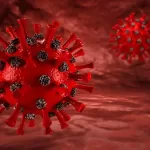
Only a small percentage of our DNA is unique to us.
July 20, 2021Human genetic mutations that distinguish us from other species may arrive in little parcels packed with DNA from extinct ancestors and relations.
Researchers report in Science Advances on July 16 that only 1.5 to 7% of the collective human genetic instruction book, or genome, contains DNA that is uniquely human.
Human-specific DNA is widely distributed throughout the genome and frequently contains genes involved in brain development and function, showing that brain evolution played a role in human evolution. The researchers do not yet know what the genes do or how the entirely human alterations to the DNA surrounding those genes may have altered brain evolution.

“I’m not sure we’ll ever know what distinguishes us as humans,” says Emilia Huerta-Sanchez, a population geneticist at Brown University in Providence, Rhode Island, who was not involved in the research. “We don’t know whether this drives us to think in certain ways or to behave in certain ways.” And it’s probable that Neandertals and Denisovans, two extinct human cousins, had comparable thoughts to humans.
The findings do not imply that people are Neandertal, Denisovan, or another sort of archaic hominid. According to the findings, humans in Sub-Saharan Africa inherited between 0.096 and 0.46 percent of their DNA from ancient interbreeding between their human ancestors and Neandertals. Non-Africans inherited a higher percentage of their DNA from Neandertals, ranging from 0.73 percent to 1.3 percent. Furthermore, some people have inherited a percentage of their DNA from Denisovans.
Using a revolutionary computer tool, researchers at the University of California, Santa Cruz examined every DNA sequence in the genomes of 279 people. The data from those individual genomes was integrated by the researchers to produce a composite representation of the human genome. The study determined if the DNA came from Denisovans, Neandertals, or a common ancestor of humans and their long-lost cousins in each location.
Despite the fact that each individual has about 1% Neandertal DNA, “if you look at a couple hundred people, their Neandertal DNA is unlikely to be in the same location,” says Kelley Harris, a population geneticist at the University of Washington in Seattle who was not involved in the work. “So, if you add up all the areas where someone has traces of Neandertal DNA, you quickly realise that they cover the vast bulk of the genome.”
The researchers discovered that almost half of the collective genome has sites where one or more people got DNA from Neandertals or Denisovans. The majority of the remaining DNA was inherited from humans and their extinct cousins’ most recent common ancestor. After deleting the inherited DNA, the researchers looked for areas where all humans share human-specific DNA variations that no other animal has. This reduced the estimated amount of distinctively human DNA to between 1.5 and 7% of the genome.
According to coauthor Nathan Schaefer, a computational biologist at the University of California, San Francisco, the result reveals the extent to which interbreeding with other hominid species altered human DNA. Prior discoveries from other organisations indicating humans interbred with Neandertals and Denisovans, as well as other extinct, undiscovered hominids, were corroborated by the researchers. It is unknown whether those enigmatic forefathers belonged to the “Dragon Man” or Nesher Ramla Homo groups, which may have been more closely linked to humans than Neandertals. Furthermore, Schaefer and colleagues discovered that mixing and mingling between different populations of humans and hominids occurred multiple times.
The researchers revealed that the mutations that identify human DNA emerged in two evolutionary surges, likely 600,000 and 200,000 years ago. Humans and Neandertals began to diverge from the hominid family tree some 600,000 years ago.
According to James Sikela, a genome scientist at the University of Colorado Anschutz Medical Campus in Aurora who was not part in the study, the estimate of the amount of distinctively human DNA does not take into account sites where people have gained or lost DNA through duplication or other mechanisms. Such extra or missing DNA may have contributed in the formation of novel characteristics, particularly those related to brain evolution.
Early DNA is typically broken into minute fragments, and researchers have only pieced together a small percentage of the genomes of ancient hominids. Because of the fragmented genomes, determining where huge amounts of DNA were lost or added is difficult. As a result, the researchers only looked at modest changes to DNA that involved one or more DNA bases — the molecule’s information-carrying components. Given how recently humans and Neandertals parted in terms of evolution, it’s not surprising that only around 7% or less of the genome has evolved distinctly human variants, according to Sikela. “That statistic does not surprise me.” Consideration of only human-contributed DNA to human genomes may result in a greater estimate of purely human DNA, he claims.
Alternatively, it might go the opposite way. As more genomes from Neandertals, Denisovans, and other extinct hominids are translated, researchers may learn that some of what today appears to be distinctively human DNA was also carried by those extinct relatives, according to Harris. “This estimate of the number of uniquely human sites is only going to decrease.”
Reference
N.K. Schaefer, B. Shapiro and R.E. Green. An ancestral recombination graph of human, Neanderthal, and Denisovan genomes. Science Advances. July 16, 2021. doi: 10.1126/sciadv.abc0776.


















